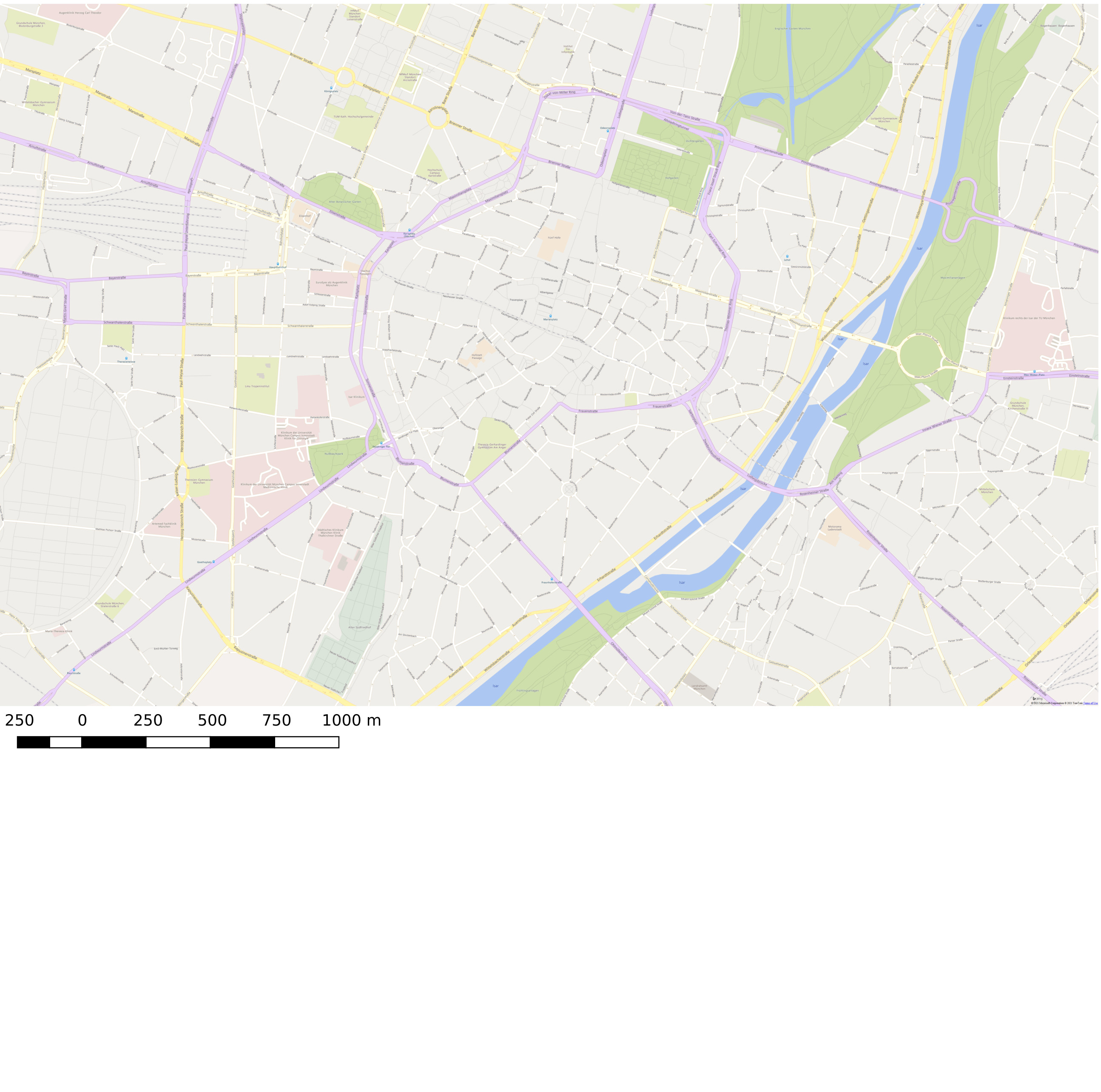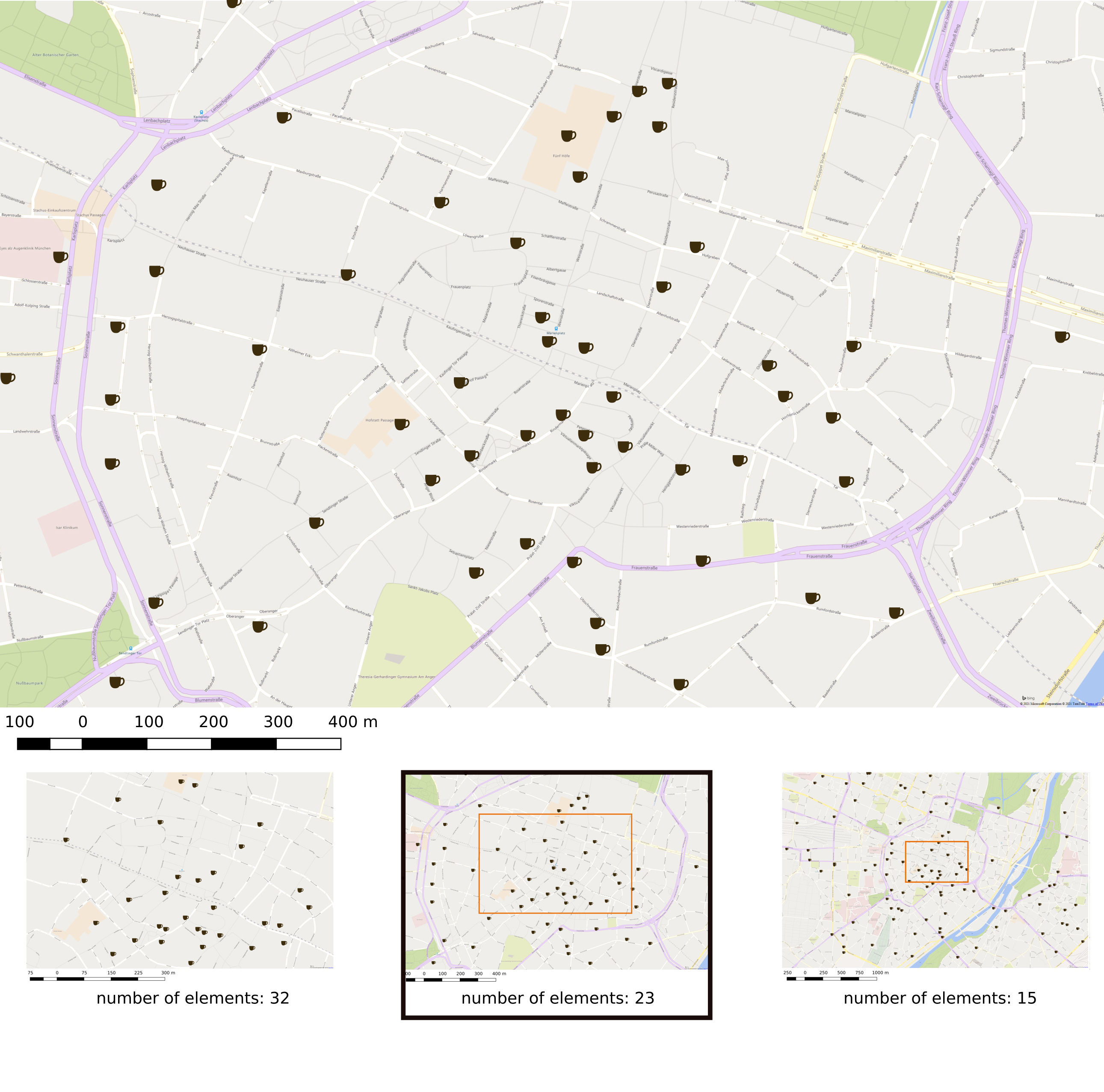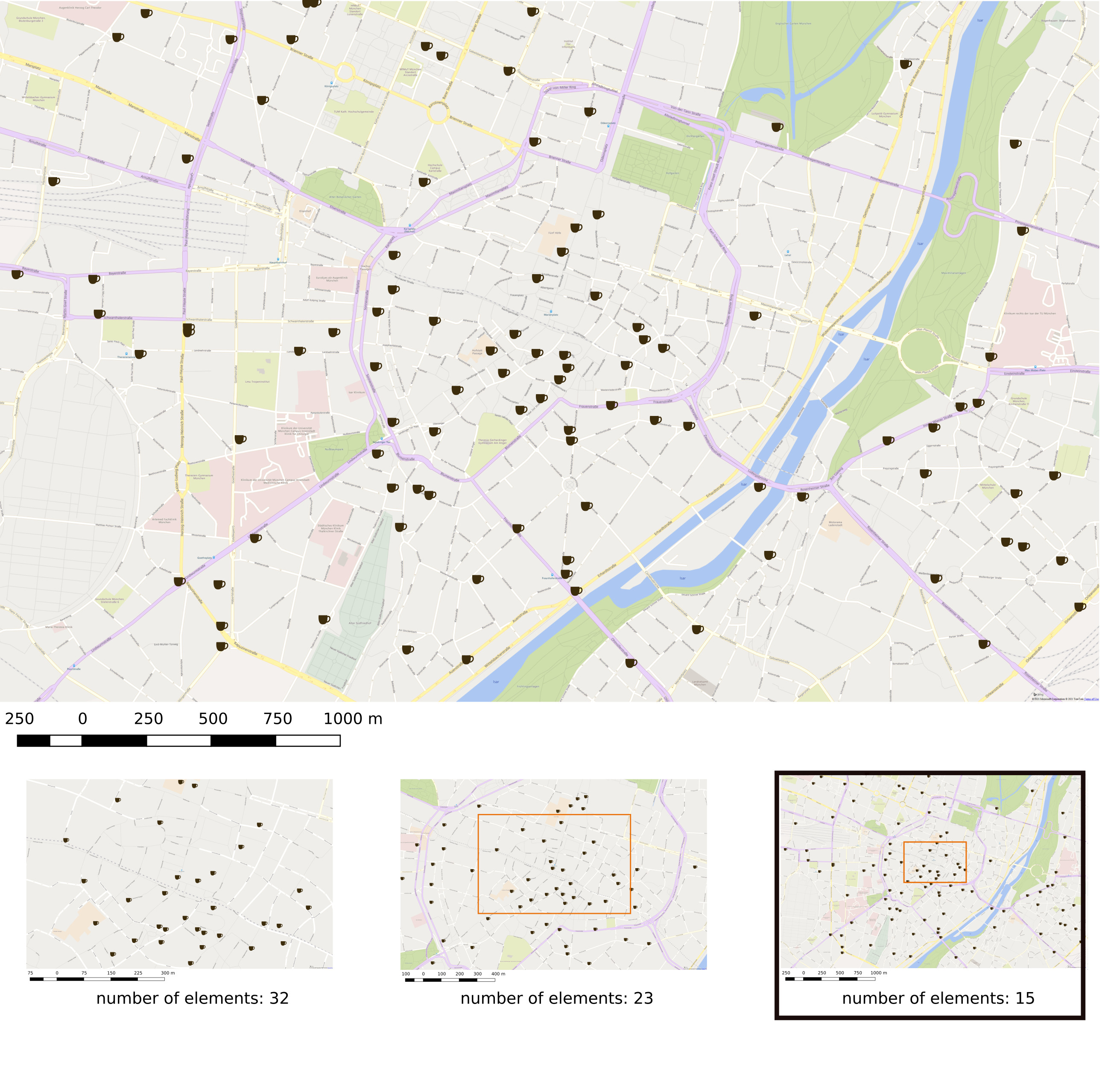Toepfer Selection Criterion
The Töpfer Selection Criterion (also called Selection Law or Radical Law) is used to determine the number of objects of the derived map in comparison to the source map. The choice has to be done manually. It is a method to generalize a map and to perform object selection in a controlled way. It is based on the idea to maintain relative object density. In most cases the Töpfer Selection Criterion is applied to topographic maps with large or medium scale.
The following formula describes the Töpfer Law:\[ n_D=n_S\sqrt{\frac{m_S}{m_D}} \]
\( n_D/n_S \): number of objects on the derived/source map
\( m_D/m_S \): scale denominator of the derived/source map
For small-scaled maps it is important to consider additional influencing factors:
- Objects that should be highlighted for a certain map use type
- Coefficient of character key and meaning:
- \(>1\): objects with special meaning
- \(<1\): objects with poor meaning
Here is a simple Example:
| \(~\)Source Map\(~~~~~~~\) | \(~\)Derived Map\(~~~~~~~\) | |
| \(~\)Number of Objects\(~~~~~~~\) | 77 | 36 |
| \(~\)Scale Denominator\(~~~~~~~\) | 10.000 | 15.000 |
\( ~~~~~~~~~~~~~~~~~~~~~~~~~n_F=77\sqrt{\frac{10.000}{15.000}} \approx \) 36
Hands-On
The following map shows Coffee-Shops in the area of Munich. By selecting different scales the amount of visible icons is generalized/decimated by the means of Töpfer Selection Criterion.
Coffee-Shops in Munich

References
- Lexikon der Kartographie und Geomatik: Auswahlgesetz, 2021-01-07
- Bin Jiang, Xintao Liu and Tao Jia: Scaling of Geographic Space as a Universal Rule for Map Generalization, 2013-02-01
- Download.geofabrik.de: OpenStreetMap Data Oberbayern, 2021-01-31
- Prof. Dr.-Ing. Liqiu Meng: Kartographische Generalisierung, 2018-05-09


